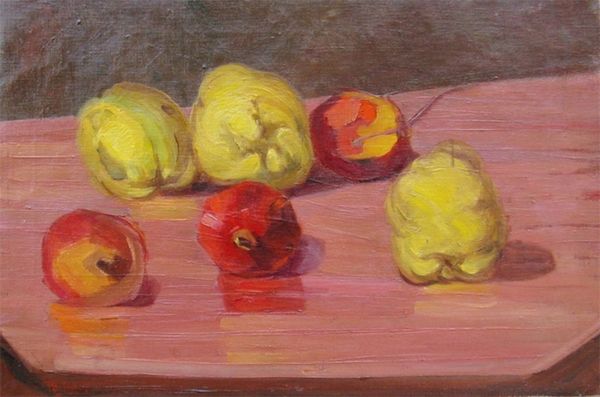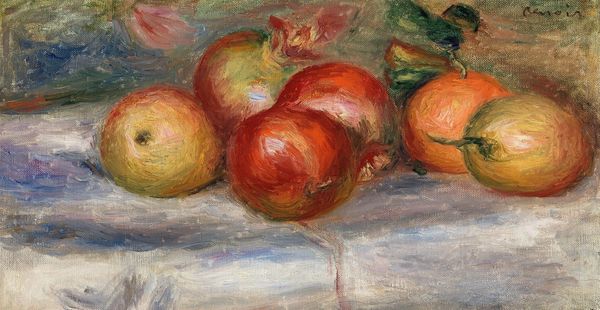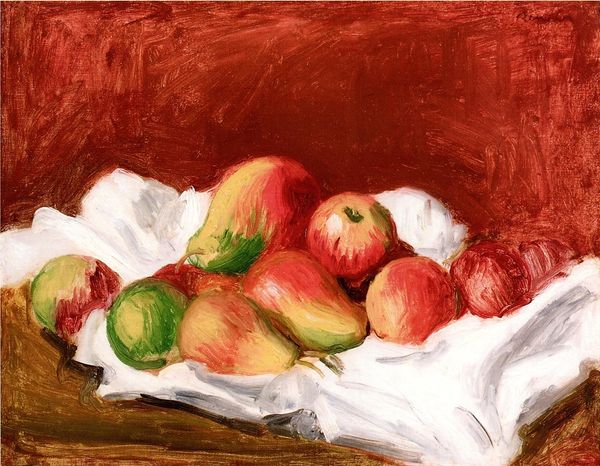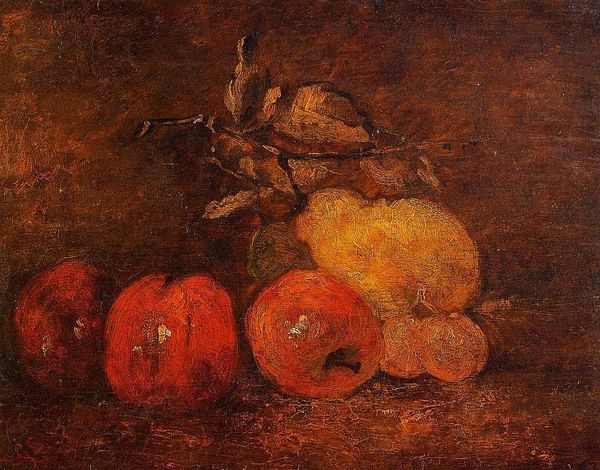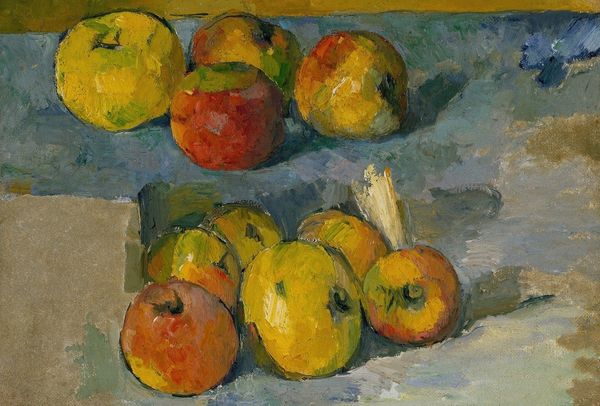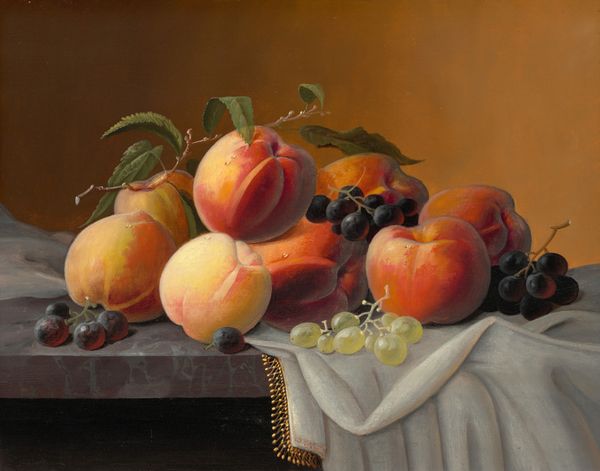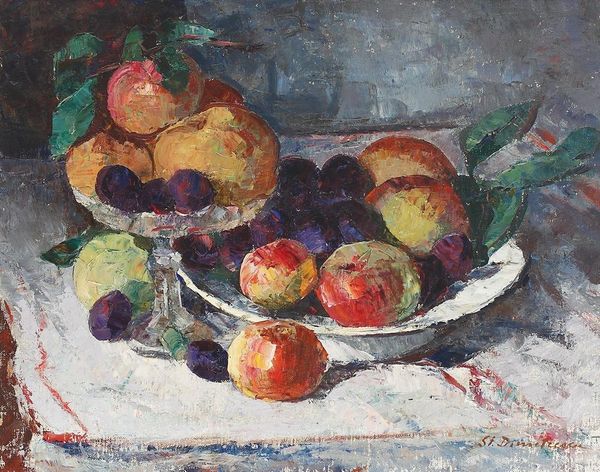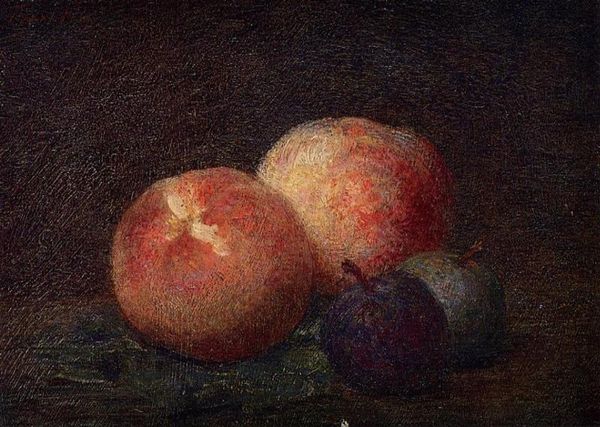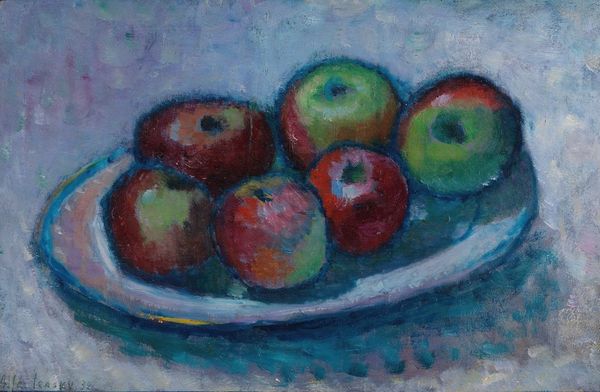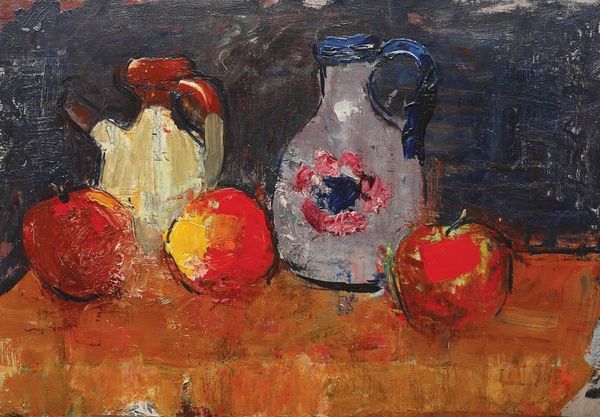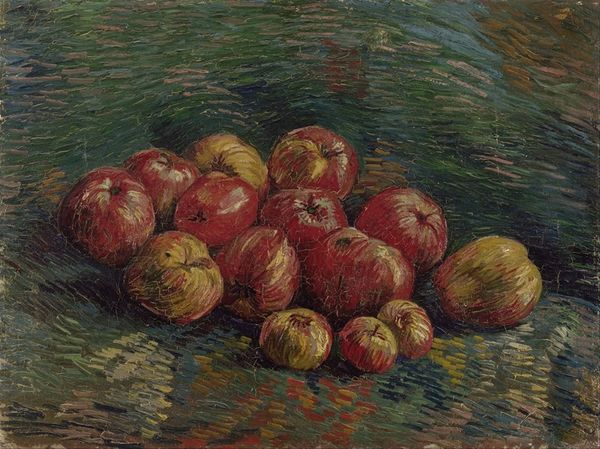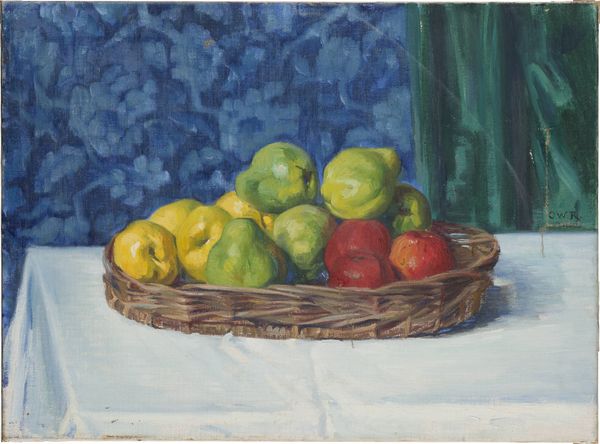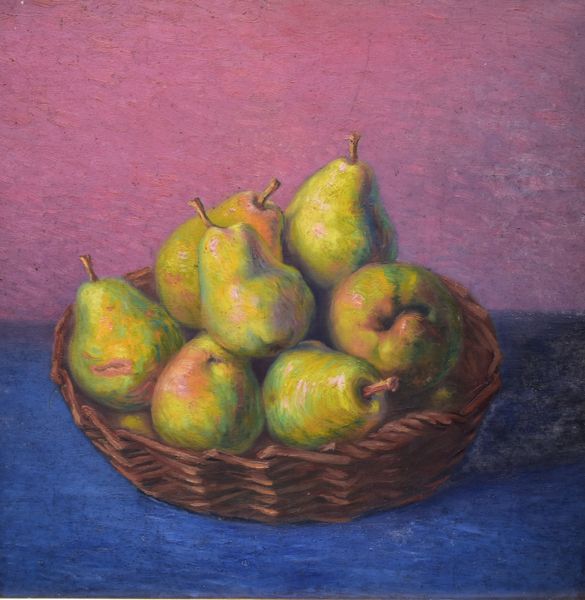
painting, oil-paint, impasto
#
still-life
#
gouache
#
still-life-photography
#
food
#
painting
#
oil-paint
#
oil painting
#
impasto
#
fruit
#
underpainting
#
painting painterly
#
realism
Copyright: Alexander Roitburd,Fair Use
Editor: We're looking at "Pomegranates and Figs," a still life by Alexander Roitburd, created in 2017. It looks like it’s done in oil on canvas. I find the impasto technique very striking. The colors are rich, but also quite somber, given the dark background. What compositional elements stand out to you? Curator: Immediately, the geometry is fascinating. The arrangement foregrounds a contrast between spherical and segmented forms. Note the recurrence of circles and near-circles – the whole pomegranates, the figs, even the exposed seeds within the fractured fruits echo this motif. How do these repeated forms structure your experience of the work? Editor: I guess it does make it feel contained, complete. It’s interesting you noticed that. Do you think there is a balance, or a lack thereof? The pomegranates, because of their larger size and vibrant color, seem to dominate the composition, and I am wondering how that relates to everything else. Curator: Precisely. The question of balance is key. Consider how the artist manipulates color saturation. The reds of the pomegranates, juxtaposed with the darker figs, create a visual tension. This deliberate imbalance contributes to the painting's overall dynamism. What affect does it create in the viewer? Editor: It gives it more depth, actually. I initially thought it was just a nice, simple still life, but now it feels like there's a lot more going on. I wonder about the use of impasto. Is it just about texture, or something else? Curator: The materiality is critical, and its surface is richly textured through the impasto technique. The raised paint amplifies the light, bringing into stark relief the artist’s vision. We cannot escape his purposeful and painterly application of form. So, can we reconcile this emphasis of structure with an underlying message of symbolism? Editor: The texture definitely adds a tangible dimension that I initially overlooked, something to do with the pleasure of the senses. Thanks, that was insightful! Curator: And I now consider how much I missed the immediate pleasure the tactile sense can evoke. Thank you.
Comments
No comments
Be the first to comment and join the conversation on the ultimate creative platform.
